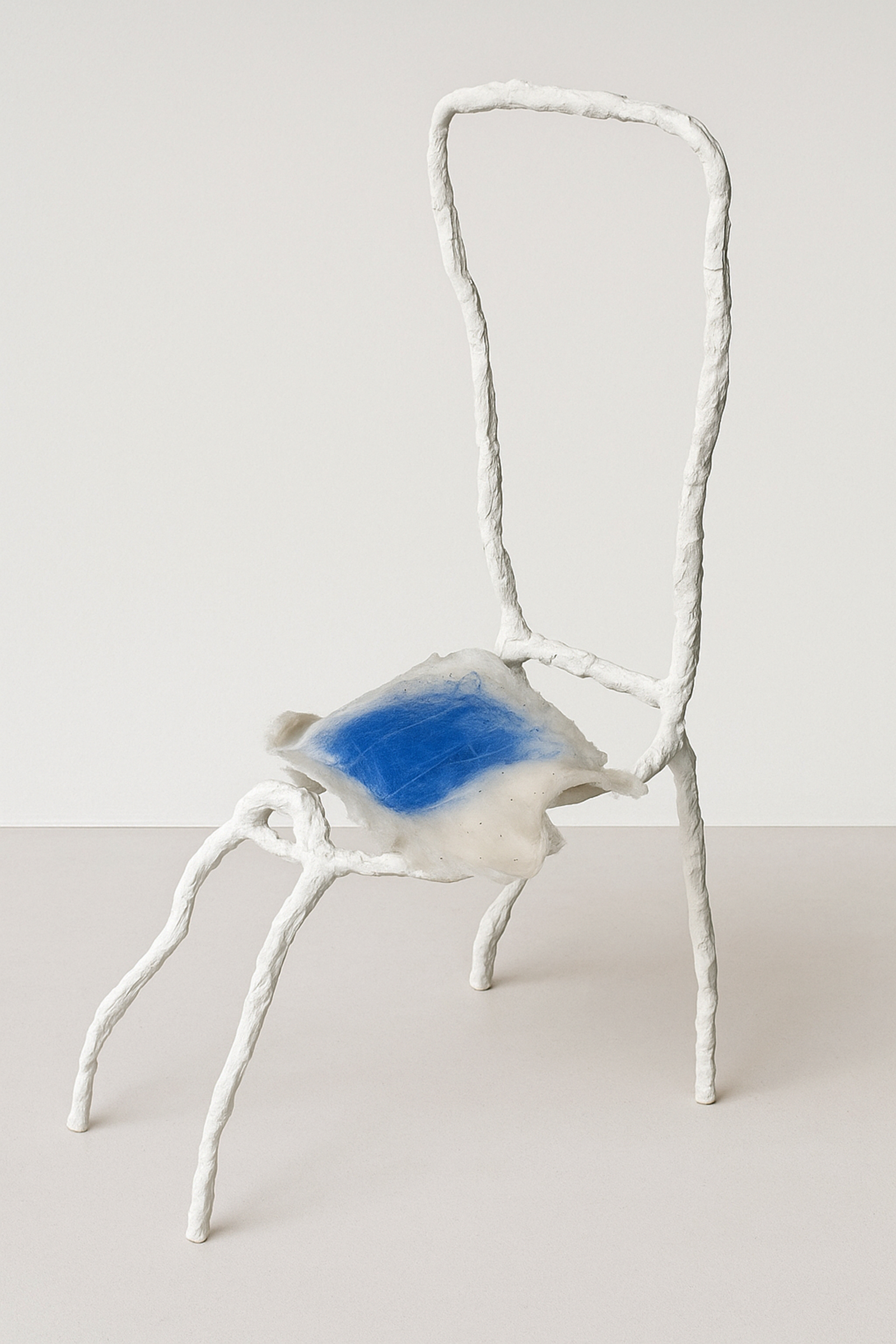Yu Jihye
Mailbox, 2022
Clay (earthenware), Fabric & textile, Mixed media, Wire, Watercolor paint
20 x 40 x 15 cm
Unique work
Certificate of authenticity included
US$300
Show your appreciation with a like
Purchasing opens early August 2025. Be the first to know!
Want a reminder? Join our mailing list.
About the work
- Materials
- Clay (earthenware), Fabric & textile, Mixed media, Wire, Watercolor paint
- Dimensions
- 20 x 40 x 15 cm
- Frame
- Frame not included
- Signature
- Unsigned.
- Certificate Of Authenticity
- Certificate included
Yu jihye’s installation Mailbox brings together the structure of a chair and the quiet emotion of waiting, evoking traces of presence through form. With its uneven, twisted legs and a delicately warped surface tinted with blue, the piece transforms a familiar object into a site of quiet dissonance. Though shaped like a chair, it is not made for sitting. Its function is stripped away, leaving only the outline of a gesture—an implied posture of pause, anticipation, or reception. It holds the echo of a body that once waited, or one that hoped to receive something just beyond reach. The patch of blue resting on the seat suggests a message—something sent or withheld. It recalls the place where letters arrive, or where unspoken feelings might have landed. The color becomes a carrier of the unreceived: unsent thoughts, unspoken desires, deferred connections. Mailbox transforms the absence of function into a space of emotional resonance. It becomes a sculptural letterbox—not to collect messages, but to hold the weight of what remains unsaid. A quiet invitation to remember the act of waiting, and the delicate threshold between presence and absence.
About the artist
Yu Jihye is an artist based in Daejeon, South Korea, whose work begins with an exploration of the sensory and contradictory state that exists before form and meaning fully emerge. Her practice often stems from the materiality of substances and the residual traces of sensation that surround them. She carefully selects organic and imperfect materials such as cotton, paper pulp, and fabric, and sensitively perceives and experiments with their physical and tactile properties. The loosely entangled texture of cotton appears both alive and lifeless, while the hardened forms of paper pulp suggest bodily movements through soft curves or twisted lines. In this way, opposing qualities—softness and strength, vitality and lifelessness—collide and intersect in her work, ultimately forming a new kind of harmony. Rather than suppressing these contradictions, Yu embraces them as a source of life force. The surfaces of her works often appear worn down or partially erased, like the remains of memory, evoking sensations that are neither fully narrated nor restored. Instead of depicting memory as a coherent narrative, she focuses on how it drifts through the body and the senses, how it resurfaces, and how it reorganizes itself into a new sensory order. Her exploration of “contradictory harmony” and the “potential for new vitality” metaphorically reflects the hybrid and artificial nature of contemporary life, revealing complex layers of perception beyond any singular message. These broken or reassembled structures reveal gaps and collisions, yet remain vividly alive—like internal movements refusing to be still. In this way, her work affirms suppressed impulses and embraces chaos, reflecting an artistic stance that generates renewed vitality from the residues of sensation.
